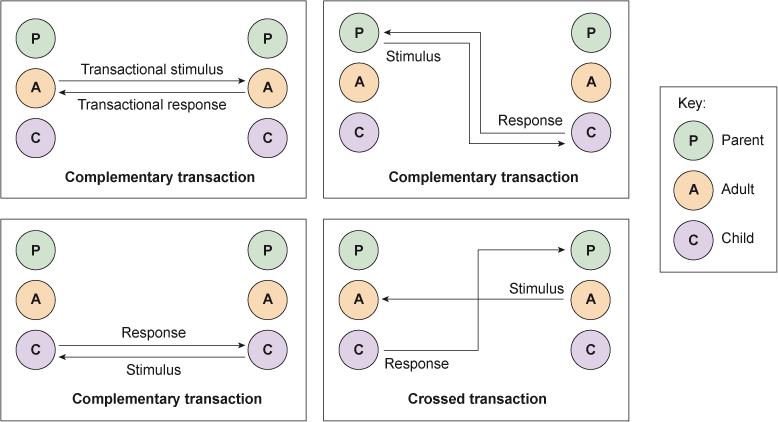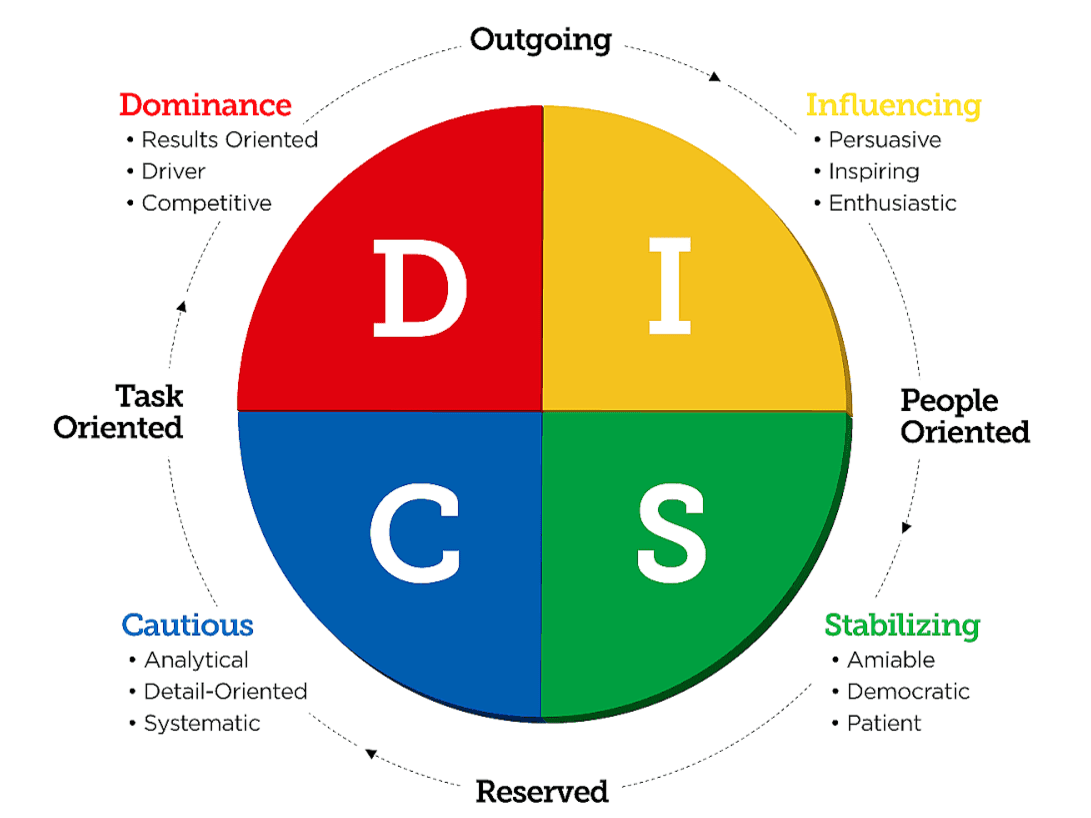TB871: Navigating communication under pressure: Transactional Analysis, DISC, and the FONT framework
Note: this is a post reflecting on one of the modules of my MSc in Systems Thinking in Practice. You can see all of the related posts in this category.
Effective communication can be challenging, especially under pressure. This post will explore how Transactional Analysis, the DISC model, and the FONT framework can be integrated to better understand and manage these situations. Using a notable example involving Donald Trump and a CNN reporter, we will illustrate these concepts and provide practical applications for improving communication in high-stress scenarios.
Transactional Analysis

Developed by Eric Berne, Transactional Analyssis is a framework for understanding social interactions. It categorises communication into three states:
- Parent (P): Behaviours and attitudes learned from authority figures.
- Adult (A): Rational and objective responses to the present situation.
- Child (C): Responses replayed from childhood experiences.
Complementary Transactions: Occur when the communication is aligned, with expected responses. For example, an Adult-to-Adult conversation where both parties engage rationally.
Crossed Transactions: Happen when the response is unexpected or inappropriate, leading to communication breakdowns. For example, an Adult communicates with another Adult, but the response comes from the Child state, causing confusion.
The DISC Model

When I’ve been in management or leadership positions, I’ve been asked to do all kinds of tests to figure out my ‘style’. The DISC model is a behavioural assessment tool with high reliability (an individual will get the same result over time) but low validity (ability to predict job performance is low). It categorises individuals into four types based on their dominant traits:
- Dominance (D): Direct, assertive, and results-oriented.
- Influencing (I): Outgoing, enthusiastic, and persuasive.
- Stabilizing (S): Calm, patient, and loyal.
- Conscientiousness (C): Analytical, detail-oriented, and reserved.
I did this assessment when over in Australia with the Moodle senior management team in 2018. I came out as being in the yellow quadrant (I) usually, but in the red quadrant (D) under pressure.
FONT framework
I’ve written about the FONT framework and non-violent communication before. I’ve found it helpful to me and also, as both Laura and I did the same workshop, in our professional relationship whenever there’s conflict within WAO.
FONT stands for:
- Feelings: Emotional responses that influence behaviour.
- Observations: Objective facts observed in the interaction.
- Needs: Underlying needs driving the behaviour.
- Thoughts: Cognitive processes and interpretations.
Even just taking a moment to write things down in four different boxes is a useful exercise: it helps separate out feelings from thoughts, for example. Crucially, it helps you figure out what you need from the situation.
Combining approaches
Integrating Transactional Analysis with DISC and FONT provides a comprehensive approach to understanding communication. It allows for the analysis of transactional states, behavioural styles, and underlying drivers in interactions.
Using the interaction between Donald Trump and a CNN reporter as a case study, included in the module materials, we can analyse it using all three approaches, and then synthesise our findings.
- Transactional Analysis: Trump’s defensive responses may represent a crossed transaction when the reporter’s questions come from an Adult state, but Trump responds from a Parent or Child state.
- DISC Model: Trump’s behaviour typically aligns with Dominance (D), showing assertiveness and control. Under pressure, this may shift to more aggressive or defensive actions.
- FONT Framework:
- Feelings: Trump might feel threatened or cornered, while the reporter might feel frustrated by evasive answers.
- Observations: Trump’s body language, tone, and choice of words is uncharacteristically defensive in response to the reporter’s persistence and questioning style.
- Needs: Trump may need to maintain control and credibility, while the reporter needs truthful information.
- Thoughts: It’s impossible to know what each party is thinking, but during the reporter’s persistent questioning, it’s clear that Trump isn’t sure how to deal with him, and is thinking on his feet.
Conclusion
Learning about Transactional Analysis has helped me realise the importance of maintaining complementary transactions for effective communication under pressure. This means responding from the appropriate transactional state to keep interactions aligned and avoid misunderstandings.
Although DISC is of questionable value, what is helpful is recognising and adjusting to different behavioural styles. We can recognise these in ourselves, and also in others; this can significantly enhance communication. For instance, when dealing with a Dominance (D) type, providing clear and concise information can help maintain a constructive dialogue.
Using the FONT framework allows us to address the underlying needs and thoughts of all parties involved, leading to a more empathetic and effective interaction. I’ve certainly found this helpful when dealing with conflict in the workplace.
References
- Belshaw, D. (2023) ‘Font and nonviolent communication’, Open Thinkering, 8 March [Online]. Available at: https://dougbelshaw.com/blog/2023/03/08/font-and-nvc (Accessed: 27 July 2024).
- ‘DISC assessment’ (2024) Wikipedia [Online]. Available at: https://en.wikipedia.org/wiki/DISC_assessment (Accessed: 27 July 2024).
- The Open University (2020) ‘Working with others under pressure’, TB871 Block 4 People stream [Online]. Available at https://learn2.open.ac.uk/mod/oucontent/view.php?id=2261494§ion=4.3.1 (Accessed 27 July 2024).
- ‘Transactional analysis’ (2024) Wikipedia [Online]. Available at: https://en.wikipedia.org/wiki/Transactional_analysis (Accessed: 27 July 2024).
